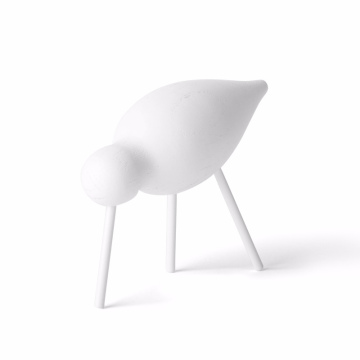From Broth to Bliss: The Ultimate Udon Experience
The Rich History of Udon
Udon, a thick wheat-flour noodle, has deep roots in Japan's culinary landscape, tracing back to the 9th century during the Heian period. Its introduction is often attributed to the influence of Chinese culture, where similar noodles were consumed. However, it wasn't until the Edo period (1603-1868) that udon evolved significantly and began to flourish across the Japanese archipelago. This period marked the emergence of various regional styles of udon, each reflecting local ingredients and cooking methods, thereby cementing its status as a staple in Japanese cuisine.
Historically, udon was primarily a dish for the nobility, due to its nutritional value and versatility. The simplicity of udon has allowed it to adapt over centuries, transforming from a meal associated with the elite to a popular food accessible to all social classes. Different regions have developed their variations, with Kagawa Prefecture being famous for its Sanuki udon, characterized by its firm texture and often served in a simple dashi broth. In contrast, the Nagano region showcases a lighter, softer noodle, typically served chilled in the summer months.
As production methods have advanced, traditional handmade techniques remain a revered aspect of udon making, emphasizing the artistry involved. Craftsmen often practice the time-honored method of kneading and cutting dough, which produces the unique texture that distinguishes authentic udon. Each bowl of udon acts as a vessel of history and culture, encapsulating the essence of Japanese culinary traditions through its preparation and consumption.
Through the years, udon has transcended mere nourishment to become a culturally significant dish, often served at family gatherings, festivals, and celebrations. This deep-rooted significance enshrines udon as not just food, but as a symbol of community and cultural heritage in Japan.
Crafting the Perfect Udon Broth
The foundation of any exceptional udon dish lies in its broth, which not only enhances the noodles but also elevates the entire culinary experience. The most traditional udon broths are dashi, soy sauce-based, and miso, each providing unique flavor profiles that cater to different palates and preferences. Understanding these broths and their respective ingredients is key to creating a mouthwatering udon dish.
Dashi is a fundamental Japanese stock made primarily from kombu (dried kelp) and katsuobushi (dried bonito flakes). This simple yet profound combination brings out umami, the savory taste that enhances dishes remarkably. To prepare dashi, one starts by soaking kombu in water and heating it gently. Just before the water reaches a boil, the kombu is removed, and katsuobushi is added, simmering briefly before straining the mixture. This results in a clear, flavorful broth that serves as a base for many udon recipes.
Alternatively, soy sauce-based broths offer a bolder flavor, blending soy sauce, mirin, and sometimes sake. This combination creates a slightly sweeter profile, perfect for those who prefer a richer taste. While making this broth from scratch can be rewarding, high-quality store-bought options are also available for those pressed for time.
Miso is another popular ingredient for udon broth, imparting a distinct taste that varies depending on the type of miso used—whether it's white, red, or mixed. This versatile ingredient can be combined with dashi or used alone, resulting in a hearty and satisfying broth that pairs wonderfully with fresh vegetables and proteins.
In summary, crafting the perfect udon broth requires an understanding of the various types available, along with both homemade and store-bought options. By incorporating quality ingredients and techniques, you can create a delectable broth that brings your udon dish to new heights, ensuring a blissful dining culinary experience at home.
Choosing the Right Udon Noodles
When embarking on the journey to create the perfect udon dish, selecting the appropriate udon noodles is a pivotal step. Udon noodles, known for their thick, chewy texture, come in various forms that can significantly influence the final meal. The most common types of udon noodles include fresh, frozen, and dried varieties, each with unique characteristics suited for different culinary applications.
Fresh udon noodles are often considered the ideal choice for their superior texture and flavor. They typically offer a soft chewiness that enhances the overall dining experience. When cooking with fresh noodles, a brief boil is sufficient to achieve the desired consistency before incorporating them into your dish. On the other hand, frozen udon noodles provide convenience without sacrificing too much quality. They are pre-cooked and simply require reheating in boiling water, making them a practical option for quick meals.
Dried udon noodles are another alternative, usually available in various thicknesses, and can be an excellent choice when fresh options are not accessible. However, they do require a longer cooking time to soften adequately, as they need to absorb water to achieve their characteristic texture. Paying attention to the thickness of the noodles is also essential; thicker noodles tend to hold broth and flavors more effectively, while thinner noodles might be more suitable for lighter dishes or broth-based soups.
Choosing the right udon noodles should also take into consideration the broth and toppings that will accompany the dish. For a rich, hearty broth, pairing it with thicker noodles enhances the umami culinary experience, while a lighter broth may benefit from the use of thinner noodles. Ultimately, balancing these elements will empower home cooks to achieve the ultimate udon culinary experience, transforming a simple meal into a comforting delight.
Toppings and Variations: Personalizing Your Udon Bowl
When it comes to customizing a bowl of udon, the toppings play a crucial role in enhancing the overall culinary experience. Traditional udon toppings include finely chopped scallions, which add a fresh and vibrant flavor. Another classic favorite is tempura, typically consisting of lightly battered and fried vegetables or shrimp. The crisp texture of tempura juxtaposed with the chewy udon noodles creates a delightful contrast. Additionally, kamaboko, a type of fish cake, offers a subtle sweetness and a pleasing texture, making it a popular choice for many udon enthusiasts.
However, the world of udon is not limited to these staple toppings. Different regions in Japan boast their unique selections, allowing for a broader exploration of flavors. For instance, in the Kumamoto region, you may encounter a bowl of udon topped with a rich and creamy raw egg, contributing an indulgent element to the dish. Alternatively, in the Aichi region, you might find udon garnished with red pickled ginger, providing a zesty kick that complements the noodles perfectly.
For those looking to innovate, consider presenting udon in various styles, such as cold udon served with a dipping sauce during the summer months or stir-fried udon that brings together an array of vibrant vegetables and proteins. To assemble a truly delectable udon bowl, think about the balance of flavors and textures. Layering your toppings artistically not only enhances visual appeal but also heightens the overall dining culinary experience. Experimentation is key; combining diverse ingredients like avocado, sesame seeds, or even gourmet sauces can result in a festive culinary adventure. Personalization is the essence of udon, encouraging each individual to create their ideal bowl that speaks to their tastes.




